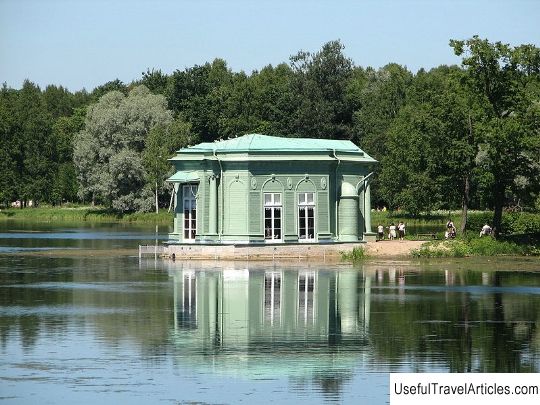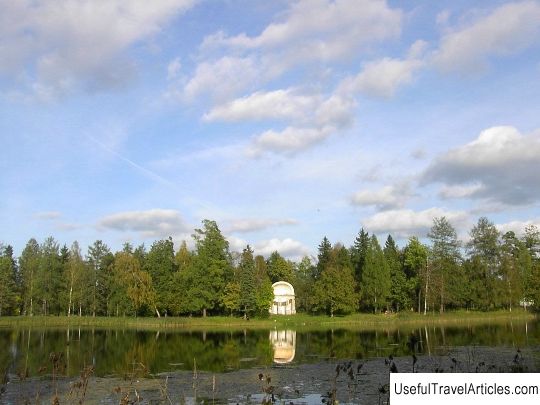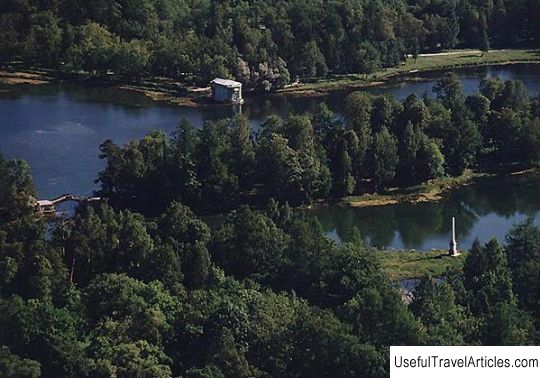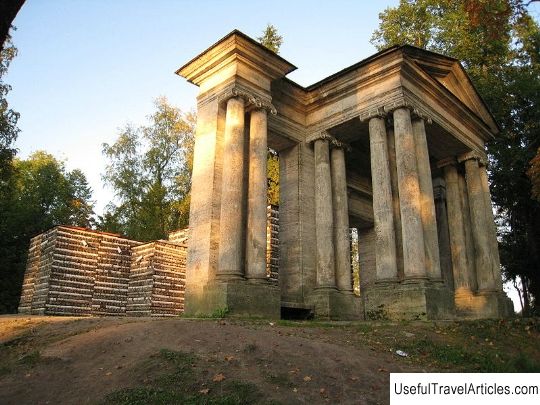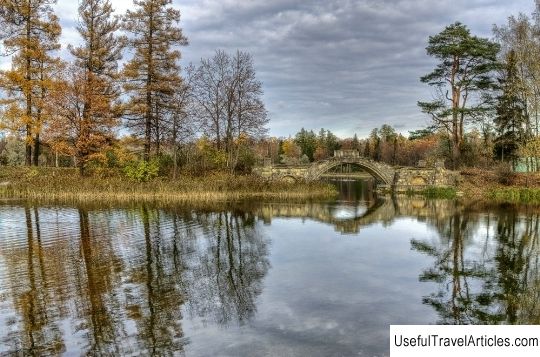Venus Pavilion in the Palace Park description and photo - Russia - Leningrad region: Gatchina
Rating: 8,4/10 (2500 votes) Venus Pavilion in Palace Park description and photos - Russia - Leningrad Region: Gatchina. Detailed information about the attraction. Description, photos and a map showing the nearest significant objects. Photo and descriptionThe Venus Pavilion (Trelyazh) is located on the shores of Lake White at the tip of the Love Island of the Palace Park in Gatchina. The idea to build the pavilion came from the owner of the park after his trip abroad in 1780. In Chantilly, Pavel Petrovich saw a similar pavilion on the Island of Love; when designing the pavilion in Gatchina Park in 1791, his images were used. The construction of the pavilion was carried out in 1792-1793. During the Great Patriotic War, the Venus Pavilion was badly damaged: the parquet was destroyed, the picturesque ceiling and wall paintings were damaged. The columns and walls were pierced by shrapnel of artillery shells. The pavilion was restored in 1963-65. according to the project of the Special Scientific and Restoration Production Workshops. L.A. Lyubimov restored the ceiling and wall paintings. The interior was reconstructed according to the project of A.A. Kedrinsky in 1974-1979. The last restoration of the Venus Pavilion took place in 2007-2010. The Venus Pavilion consists of two equal parts: a rectangular, elongated, large hall with cut corners, and a small rectangular entrance hall with semicircular niches. The main facade of the building is decorated with a four-column portico of the Ionian order with a high plinth. Profiled archivolt frames a wide paneled door with a semicircular transom, which is emphasized by an enlarged lock in the form of a console with an impost with an inscription on the name of the pavilion and the island. The portico is completed with a triangular pediment and a classic entablature. In the tympanum of the pediment there is a relief carved emblem of Cupid - a quiver with arrows, branches of a rose and laurel and a burning torch. The composition and decor of the entablature continues along the entire perimeter of the pavilion facades. The ribbon parapet is decorated with a trellis net. Other facades of the building and semicircular projections on the sides of the lobby are decorated in a similar way. They are completed with a figured keystone. The rhythm of decorative articulations is enhanced by relief medallions located between the arches. The facade is covered with shingles horizontally and diagonally. And the light green painting of the pavilion is in good harmony with this nature of the facade processing. The lobby of the Venus pavilion is distinguished by austere severity; the room is illuminated only through the door frame. The large hall of the pavilion in the plan is a rectangle with cut corners, 10 m long, 8 m wide. The pavilion's windows-doors face the lake. Mirrors set in cut corners increase the illumination of the room, their semicircular frames are completed with gilded carved garlands and wreaths. Above the mirrors there are picturesque panels depicting quivers with arrows, flaming hearts and flowers. The walls on the side of the mirrors are decorated with ornamental compositions that imitate molding, made in the manner of grisaille with glue paint on plaster on a golden yellow background. The panels above the doors of the hall are made using the same technique, but the base is a blue background. A rich cornice with symmetrically positioned stucco brackets frames the ceiling of the hall. The picturesque plafond was painted by I.Ya. Mettenlater in 1797. It is framed by a paduga painted with grisaille. The interior of the hall is enriched with four marble fountains opposite the glass doors and reflected in the mirrors. In 1887. from the White Hall of the Grand Palace to the Venus Pavilion, a part of the inlaid parquet was transferred, which was made in the form of garlands of oak leaves and large circles according to the drawing by Antonio Rinaldi. Previously, the floor of the pavilion was most likely made of reconstituted marble.          We also recommend reading Grotte di Frasassi description and photos - Italy: Marche Topic: Venus Pavilion in the Palace Park description and photo - Russia - Leningrad region: Gatchina. |
